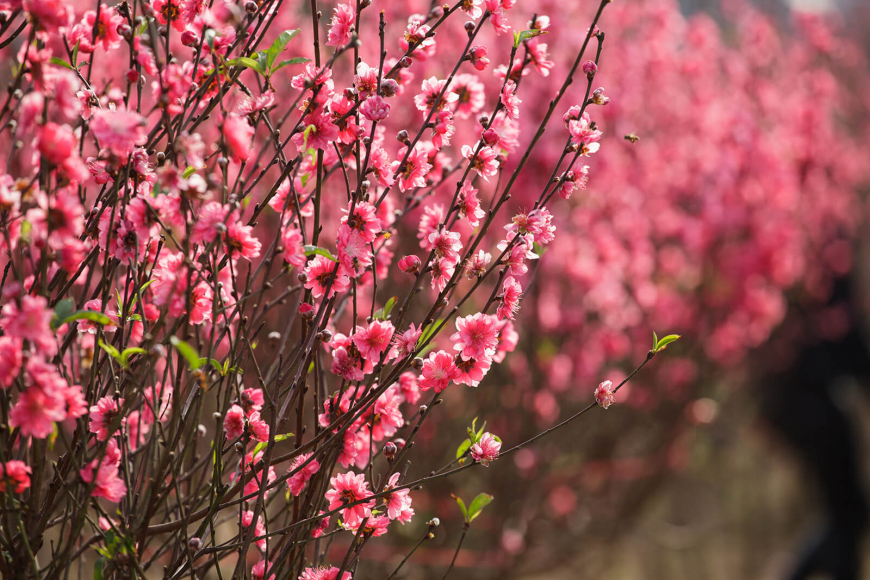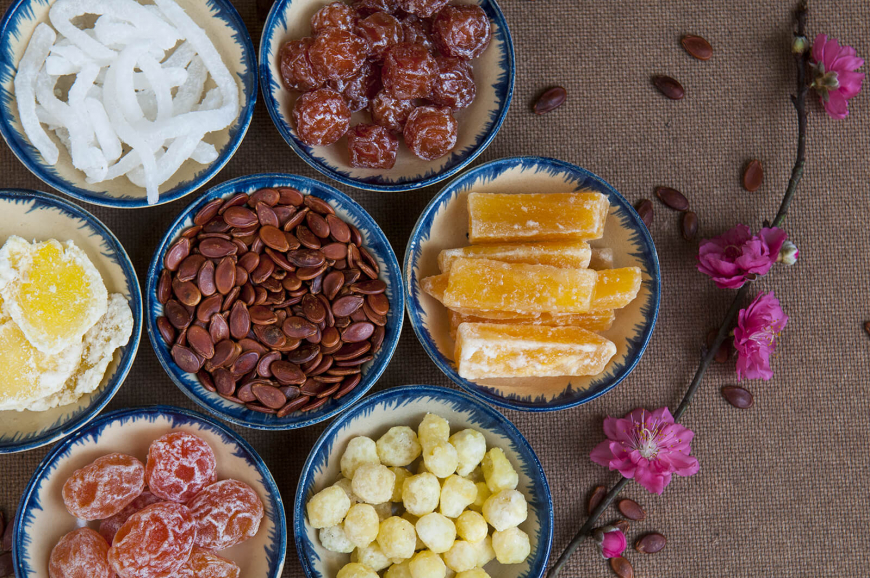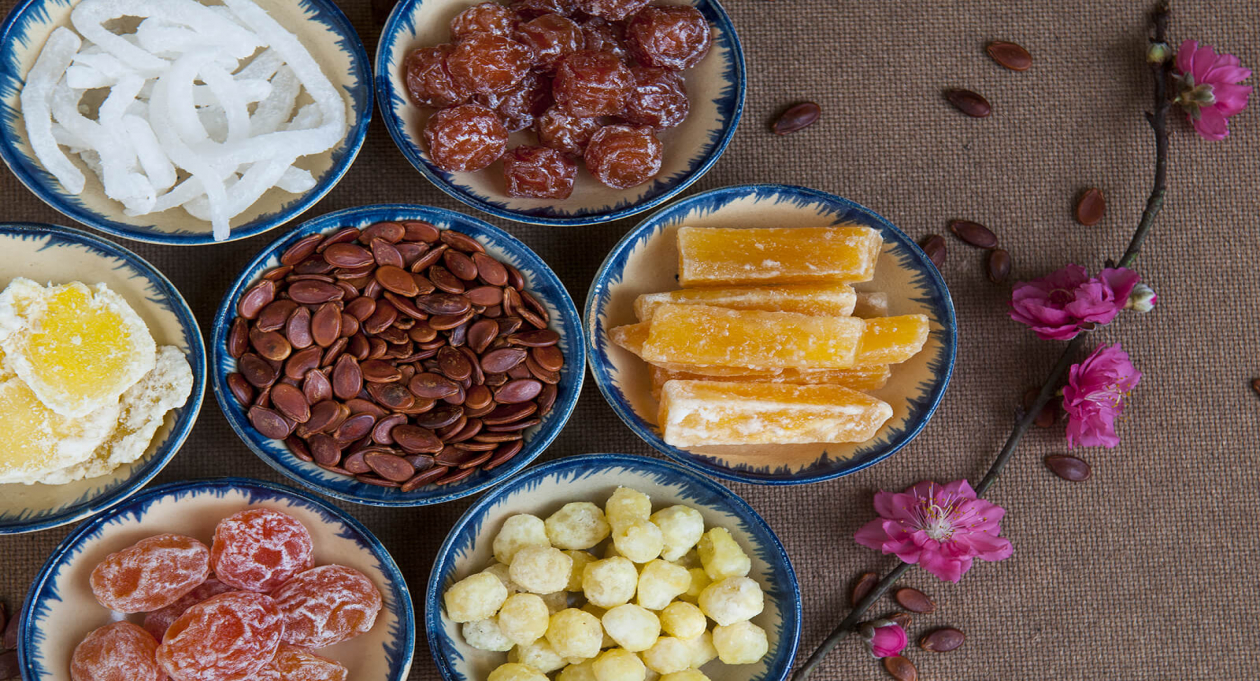Tet Nguyen Dan (Festival of the First Morning of the First Day) may be the official title for the Vietnamese Lunar New Year. But when in Vietnam, all you need to know is: Tet.
Tet, which often falls in late January or early February, is the most significant holiday on the Vietnamese calendar since it is the day for reunion, hope and luck.
The Vietnamese penchant to party is on full-display during Tet and the countdown to midnight typically starts a week in advance.

Tet is steeped in pageantry, filial recognition and quite a bit of superstition. In preparation for the New Year, families clean their homes - top to bottom. Something of a ritualistic spring cleaning, only with an organized diligence not often found in the West. Not only are homes tidied, people clean up (haircuts, new clothes) and outstanding debts are paid - the slate is cleaned, so-to-speak.
Decorative plants, trees and flowers abound. Peach, apricot and plum blossoms - kumquat trees bearing their orange fruit. Homes and storefronts are ablaze in chrysanthemums, marigolds and white daffodils.

In the past, Vietnamese people displayed cay neu - a long bamboo pole, stripped of its leaves and often wrapped in red (red being a sign of good luck) at home during Tet. Cay neu is decorated with flags and various ornaments in order to ward off evil spirits and chase away any lingering bad luck of the previous year. So important is cay neu, that its removal signifies the finale of this extended New Year celebration. This ritual is still preserved and reenacted in traditional festivals nowadays in Viet Nam.
If you’re visiting Viet Nam during Tet, you’ll witness the hustle and bustle - the good cheer on the streets. The holiday resembles a parade in full-swing, whether you’re in the city or the countryside. Tet invigorates and inspires the Vietnamese and the celebratory mood and pageantry are on display for many days leading up to the actual New Year.
For most Vietnamese, Tet is an opportunity for family reunions (many businesses close for the week as people return to their hometowns). Every home has an altar for honoring ancestors, and families flock to the gravesites of deceased loved ones, bearing flowers, incense and gifts.
The first day of Tet is reserved for intimate families. It’s the day when elders reign supreme and youngster’s receive envelopes filled with “Lucky Money.” Day one also involves a ritual of great importance. It is said, the first person to enter a house on New Year’s Day, symbolizes how the rest of the year will unfold. To circumvent any unforeseen surprises, an honored or successful family member is often invited to be the first to visit. Let’s put it this way: people don’t just “drop-in” on the first day of Tet—there’s a lot hanging in the balance! And speaking of superstitions, while a thorough house cleaning prior to Tet is de rigueur, you won’t find any brooms in operation during the actual holiday itself—one must avoid the risk of sweeping away good luck.

On day two, people typically travel to visit friends and relatives—a parade of revelry that goes door-to-door, block-to-block and throughout neighborhoods and communities.
Day three is for teachers (a greatly honored caste). It’s not uncommon to find classmates grouping to visit their teachers, bringing gifts of fruits and flowers.
The streets are alive, not only with the celebrating citizenry, but also with colorful blooms, ornate lanterns, dragon and lion dancers, gongs, drums and bells. Parades are not uncommon, nor are firework displays at night.
If you happen to be in one of the larger cities during Tet (Hanoi, Ho Chi Minh City, Da Nang et al), there are many organized events taking place throughout the long Tet holiday. Food is an important part of the pomp and circumstance of Tet. Certain dishes are exclusive to the holiday. Perhaps the most famous being Banh chung (sticky square cake) and Banh tet (a cylindrical version). Made from glutinous rice, mung bean and pork (with other ingredients added, depending on family recipes), the cake is wrapped in banana leaves and boiled for several hours.

Thit kho hot vit (braised pork belly with duck egg) – popular dish of the South, is slow-simmered in coconut juice and fish sauce and served as something of a comfort-food stew.

Cu kieu (pickled scallion head) is marinated in sweet and sour sauce. The scallion heads are served with Tom kho (dried shrimp). Cu kieu is a popular side-dish during Tet feasts.
Xoi gac (sticky rice) is a dish with the holiday spirit! The red colored rice (red symbolizing good luck) has quite a few versions, which include peanuts or mung beans or assorted fruit.
Since Tet holiday brings people together, often for quick visits, snacks are always on hand. Among the most popular are Mứt, a candied fruit. You’ll find ginger, coconut, dry butternut squash, tamarind, carrot, pumpkin, star fruit, pineapple and more.
Another tasty snack found in most every home is Hat dua (watermelon seed). Like Xoi gac, the melon seeds are red in color and therefore considered a symbol of good fortune.

Keo me xung is a brittle cracker/candy made of sesame seeds or peanuts (bean paste and sugar) and wrapped in a layer of baked rice paper. These bite sized goodies are popular with green tea.
To experience Tet is to witness the Vietnamese at their affable best. Tet is a celebration of continuous joy - you can’t help but be swept up in the jubilance: Chuc mung nam moi (Happy New Year)…



